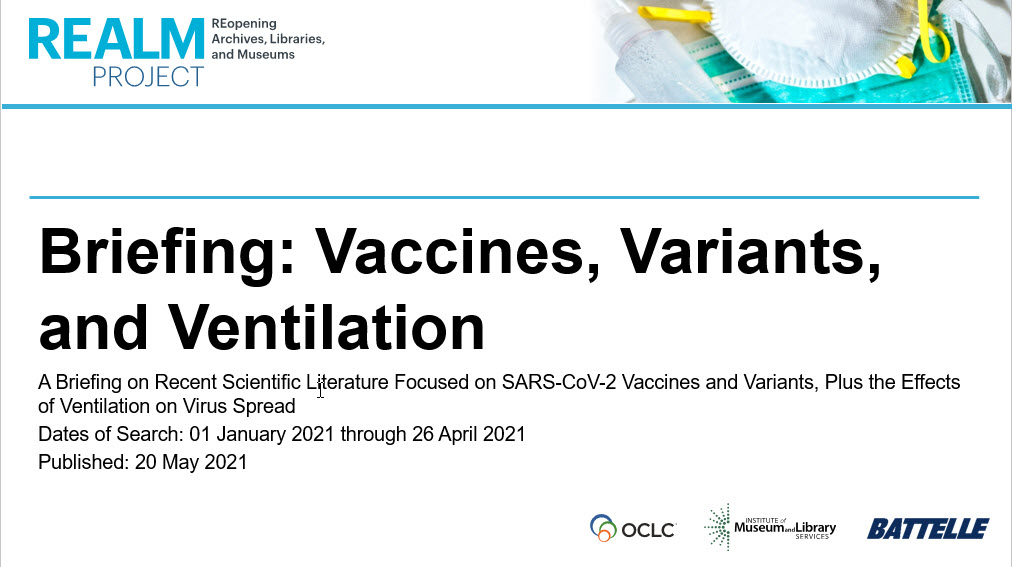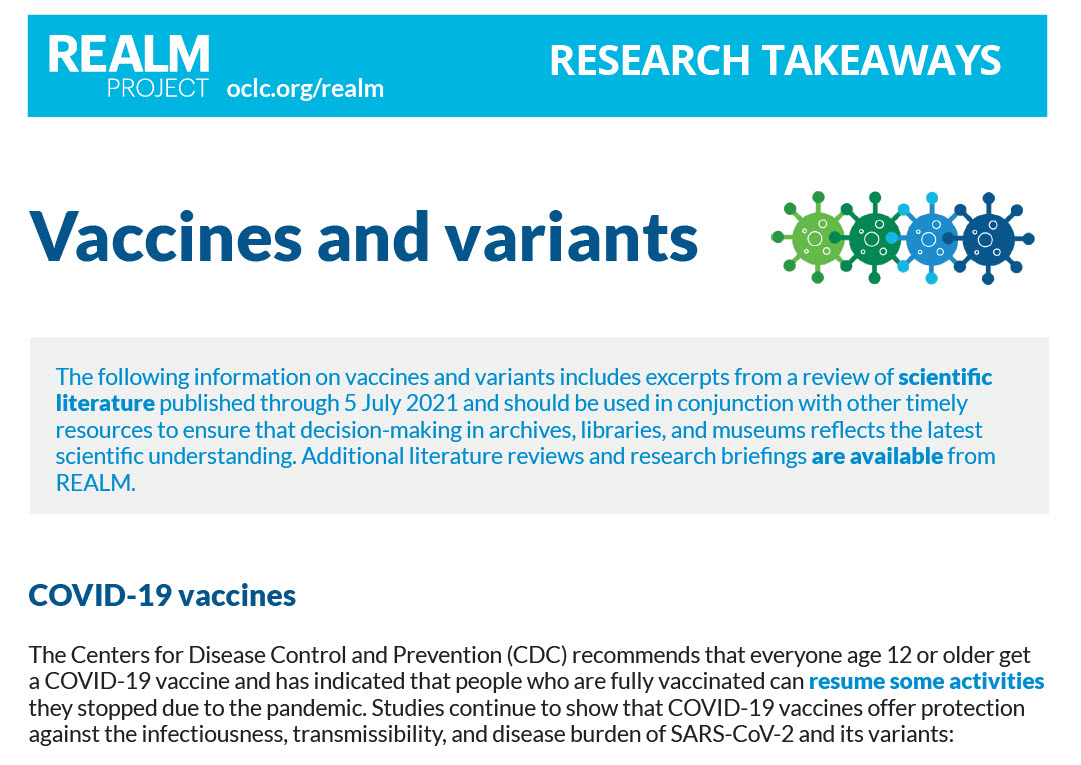REALM Project
REopening
Archives, Libraries,
and Museums
Research
Research > Briefing - Vaccines, variants and ventilation
Research briefing: Vaccines, variants and ventilation
This briefing, prepared by researchers at Battelle, is intended to provide timely information about SARS-CoV-2 vaccines and variants to libraries, archives, and museums (LAMs), and their stakeholders. This is a review of scientific literature published through 05 July 2021, and should be used in conjunction with other timely resources to ensure decision-making in LAMs reflects the latest scientific understanding. Continual re-evaluation of SARS-CoV-2 policies is highly recommended as new scientific discoveries are published.
Research questions
- What implications does SARS-CoV-2 vaccination in the US have for public health interventions and policies, especially related to indoor environments?
- What differences have been found for SARS-CoV-2 variants (compared to the original strain) in the US in terms of spread, transmissibility, surface attenuation, and effectiveness of public health interventions?
- What effects do ventilation and ventilation-based interventions (e.g., heating, ventilation, and air conditioning systems (HVAC)) have on the spread of SARS-CoV-2 in indoor environments?
HIGHLIGHTS
- Vaccines: CDC social vulnerability index (SVI) data indicate that disparities in US vaccination coverage by SVI have increased over time, especially in large fringe metropolitan and nonmetropolitan counties. These disparities are associated with socioeconomic status, household composition, and disability. (slide 21)
- Variants: A recent global analysis showed that variants of concern (Alpha, Beta, Gamma, and Delta) have rapidly replaced previously common strains in nearly all countries studied. (slide 25)
- Ventilation: Managing places where stale air may accumulate is important to mitigate the spread of COVID-19. Stale air may accumulate around privacy screens or large items and/or work equipment. Smoke visualization and CO2 meters can help determine where stale air accumulates in a space. (slide 42)
Notes for the reader
As you read this briefing, keep in mind a few key points:
- The research and information captured in the findings include both peer-reviewed and non-peer-reviewed studies. In the interest of publishing emerging research related to the COVID-19 pandemic as quickly as possible, publication has been expedited rather than waiting for time-intensive peer review.
- The review includes findings for industries, such as health care, that operate under considerably different constraints and risk factors than do libraries, archives, and museums (LAMs). However, it was important to consider a broad range of available research to determine what may be applicable to LAM operations and identify what research gaps exist. The research captured in the review does not represent recommendations or guidance for LAMs.
- Additional literature reviews and research briefings are available from REALM.
- A helpful resource for those interested in tracking the "known unknowns" about this virus is the DHS Master Question List for COVID-19 (caused by SARS-CoV-2)


